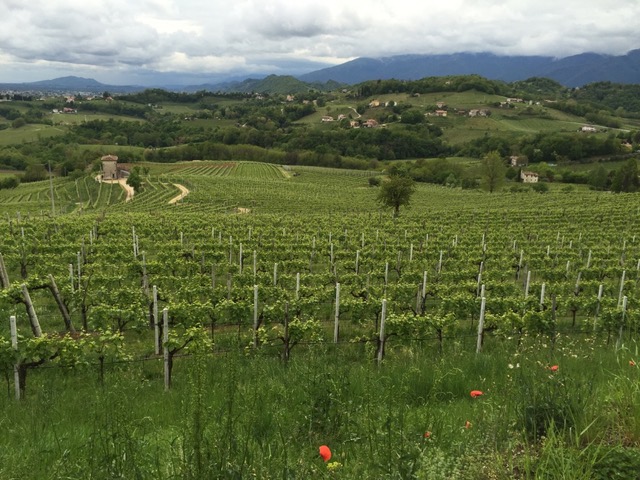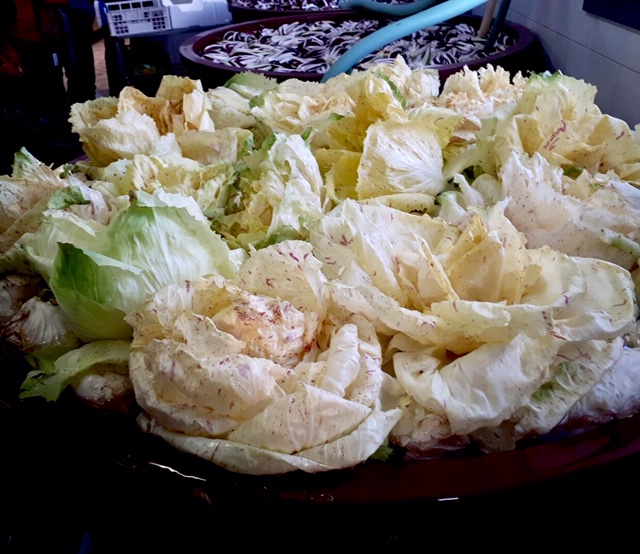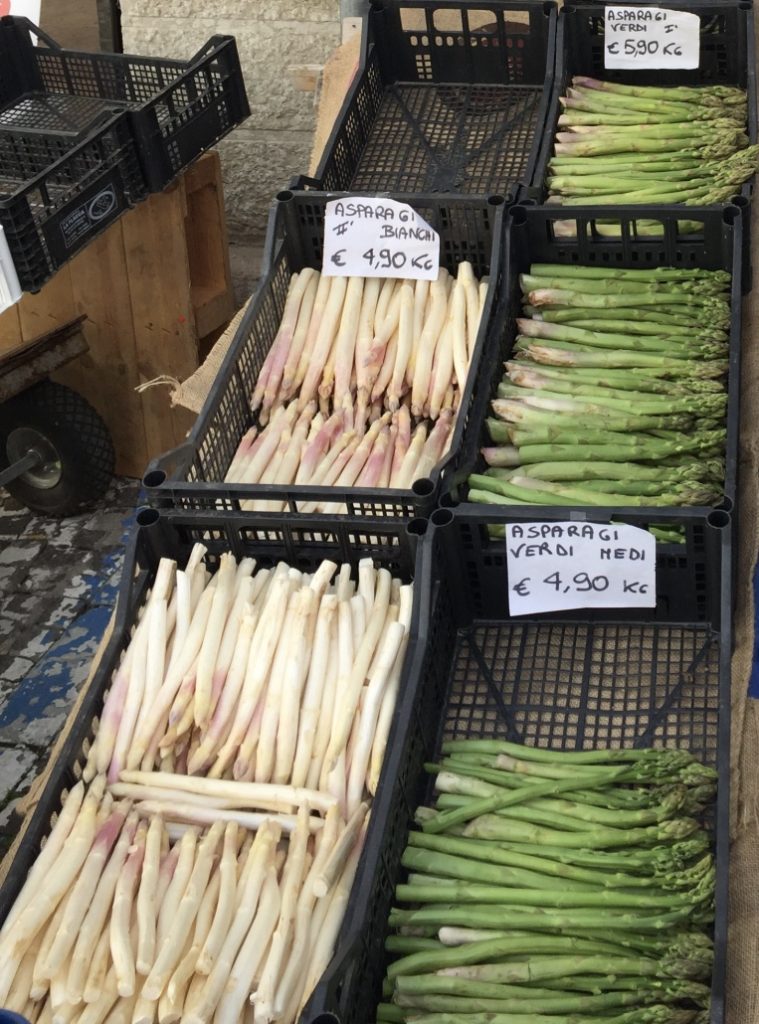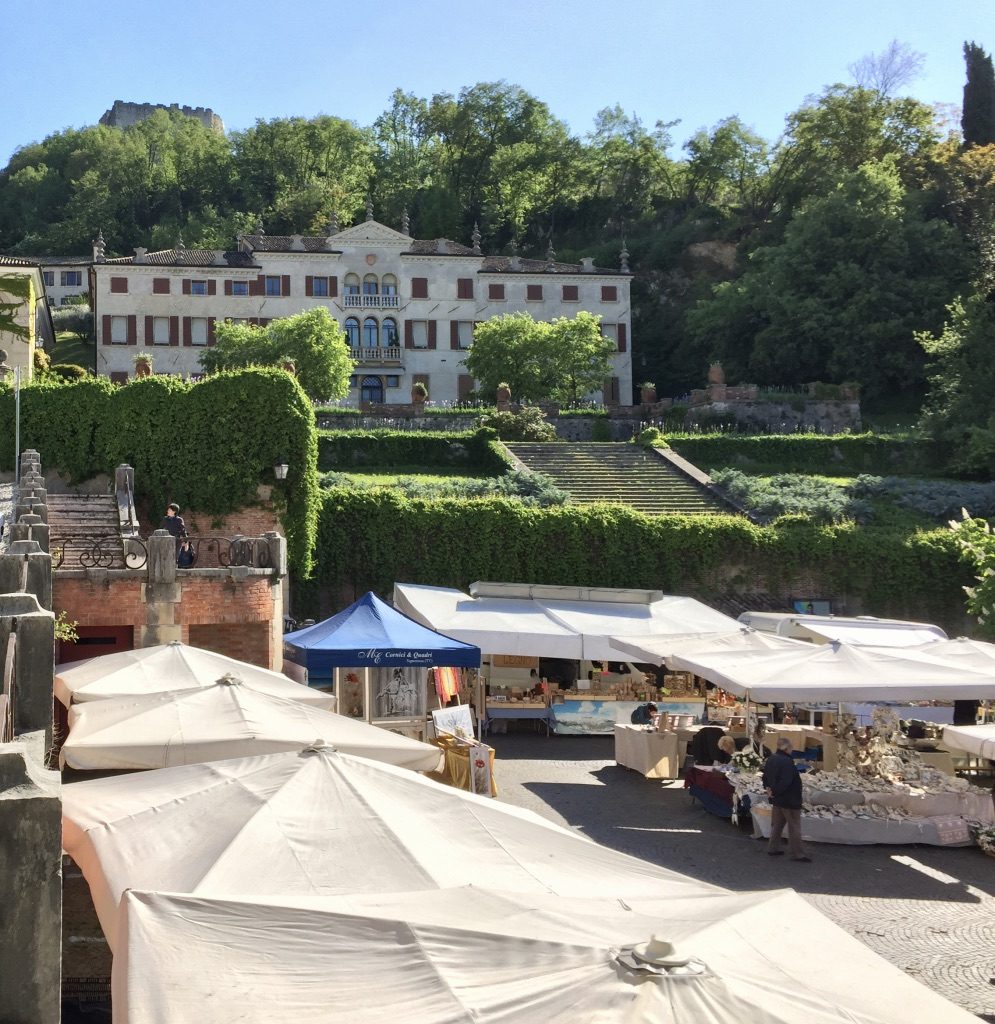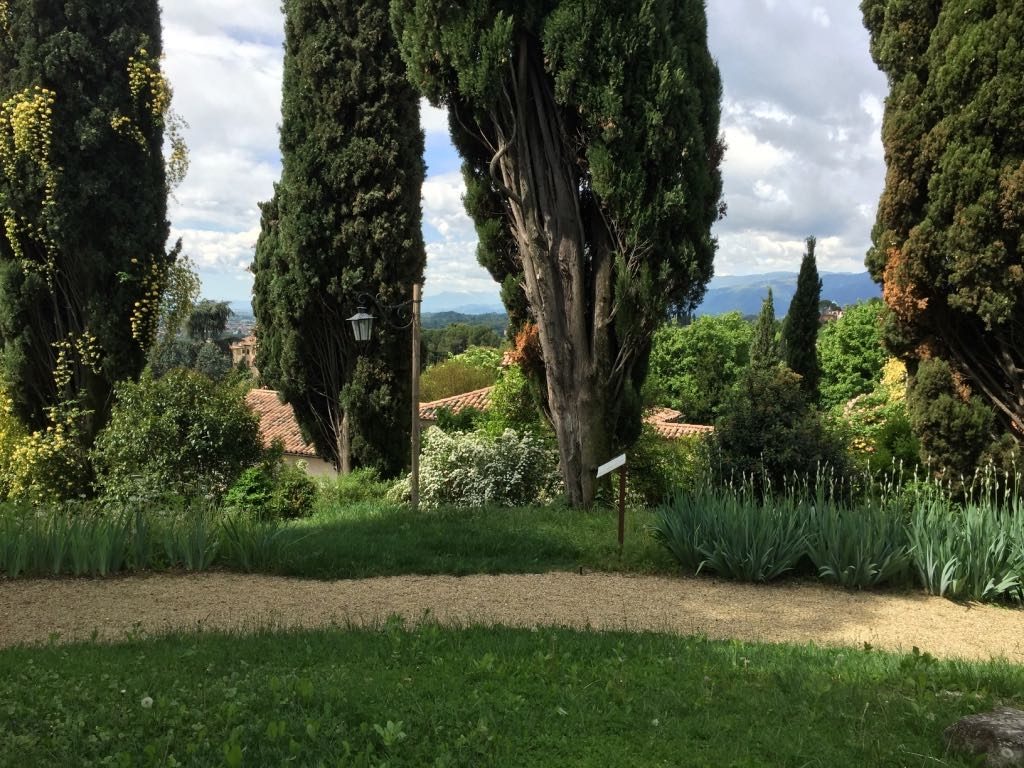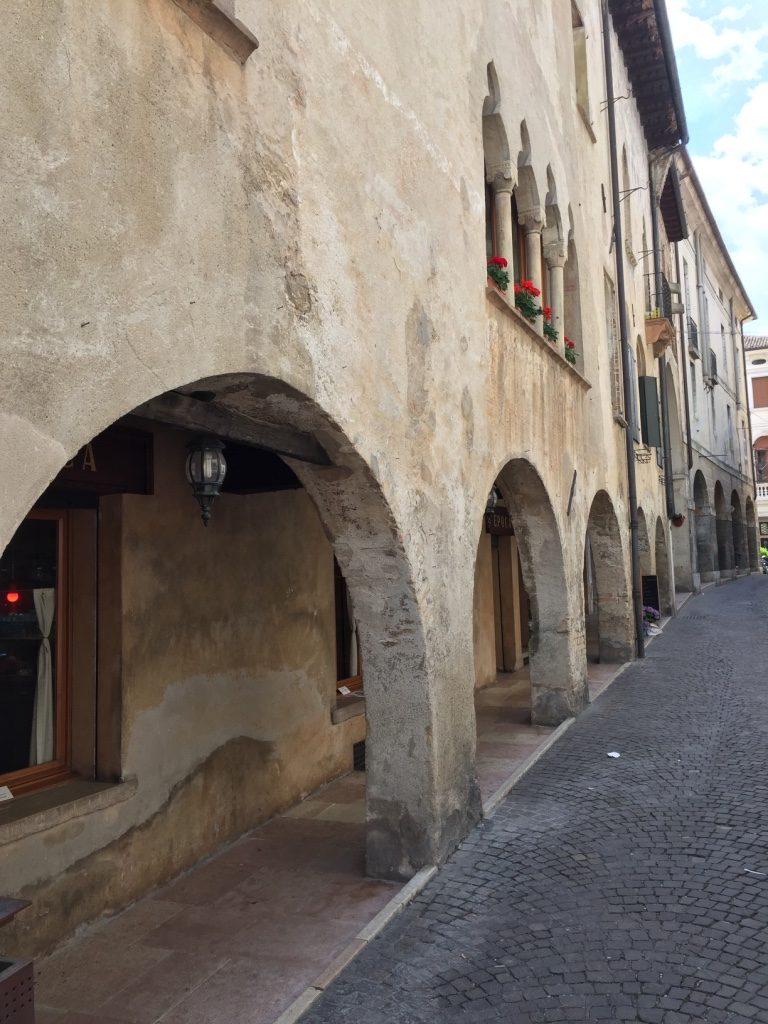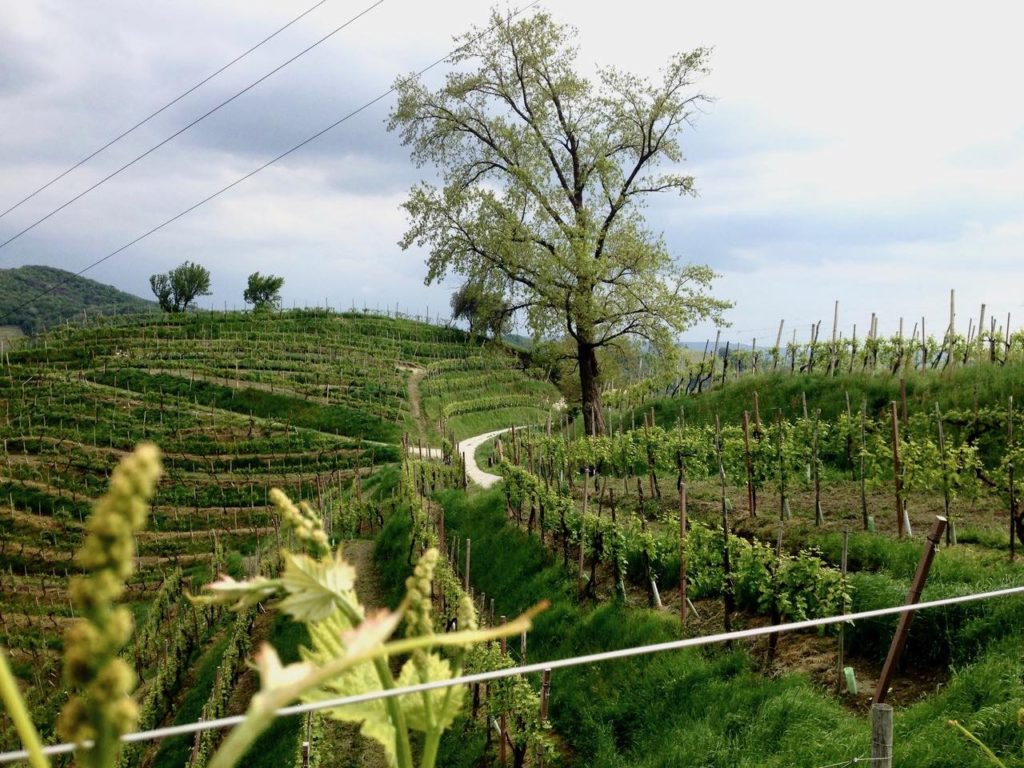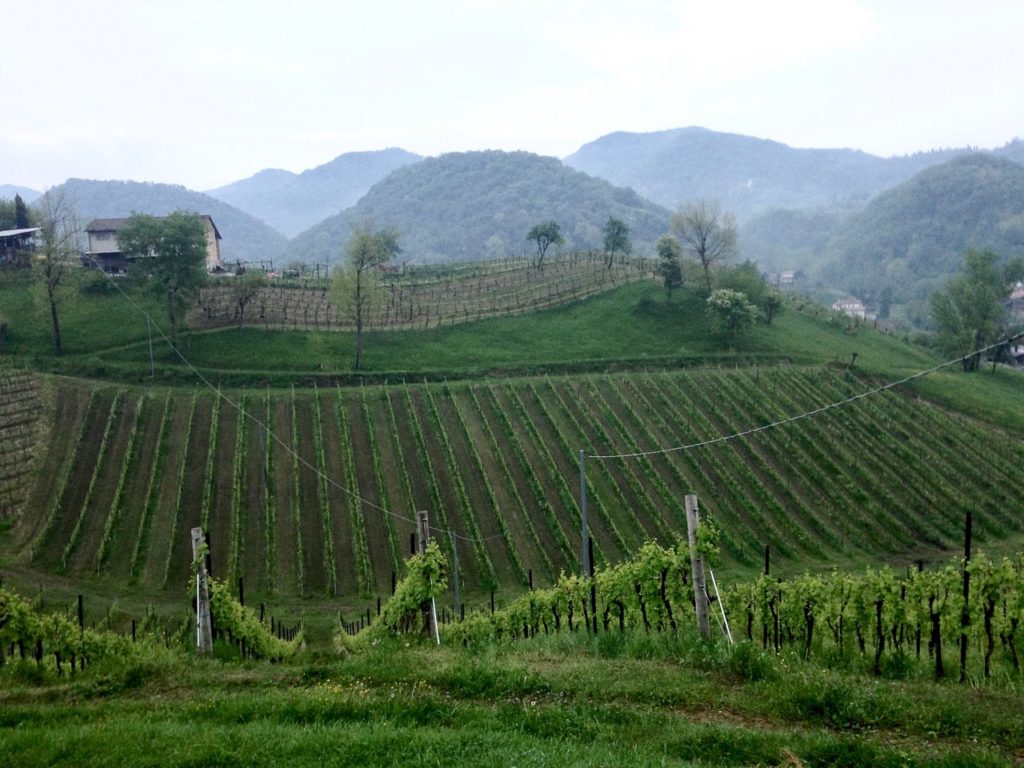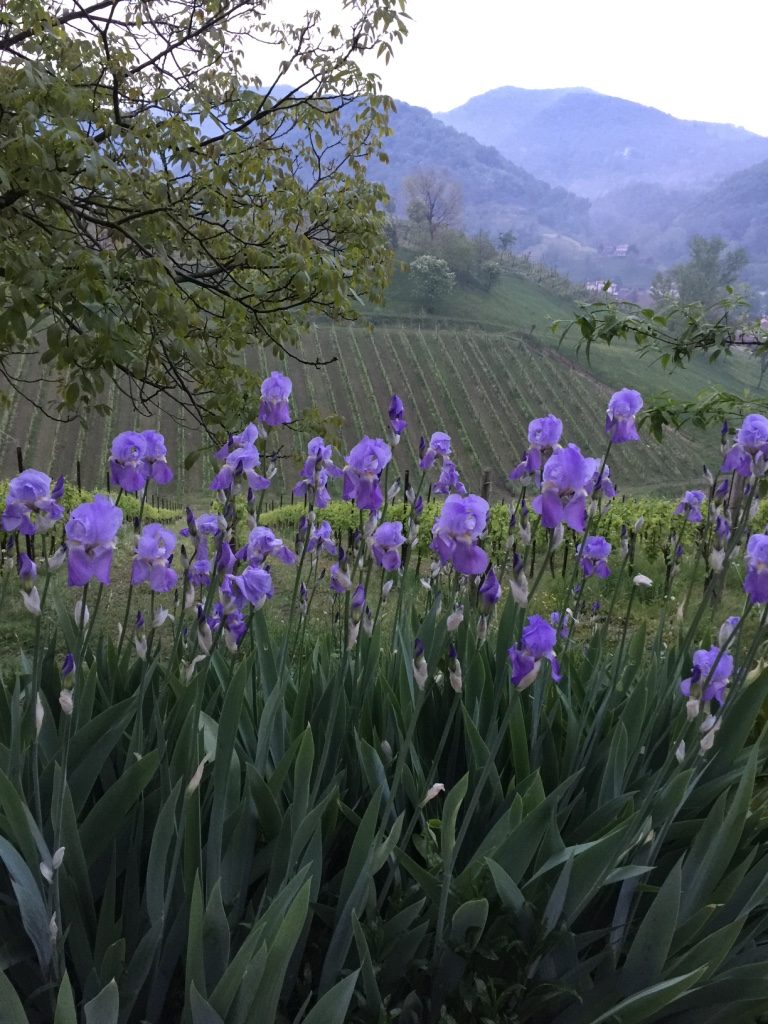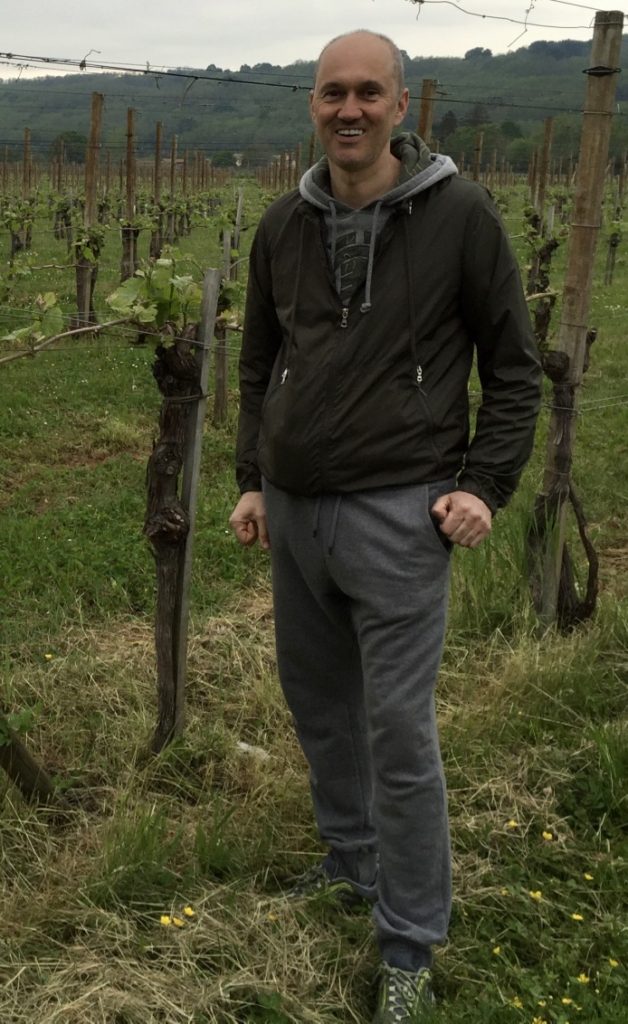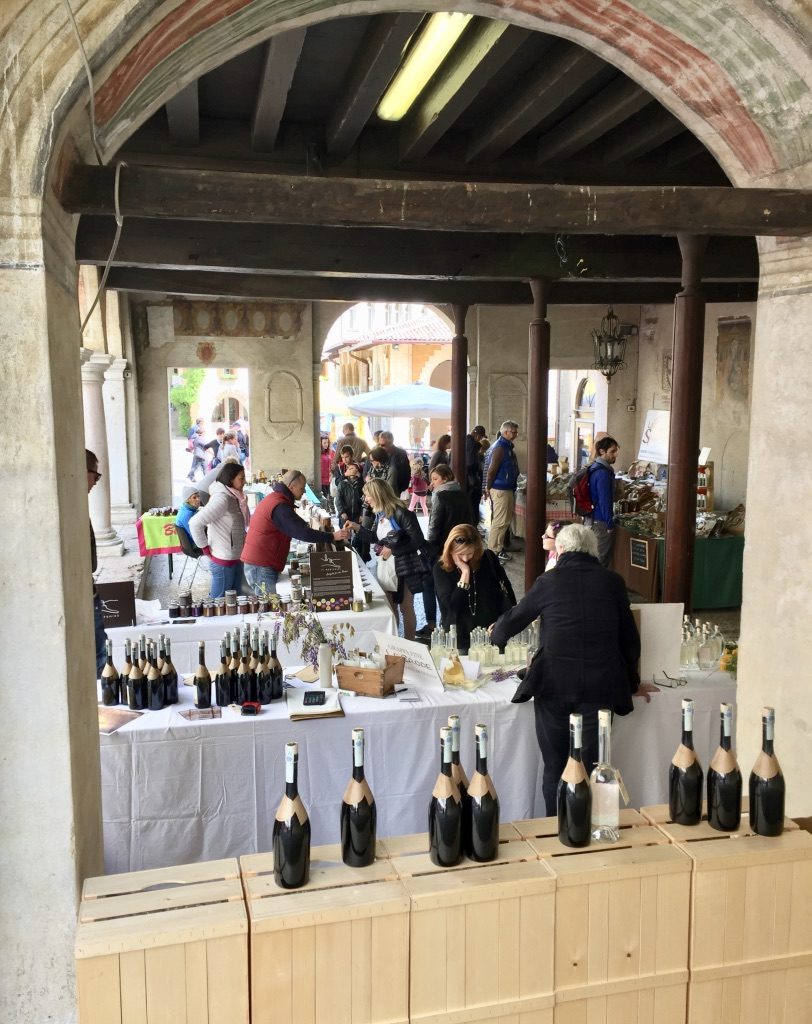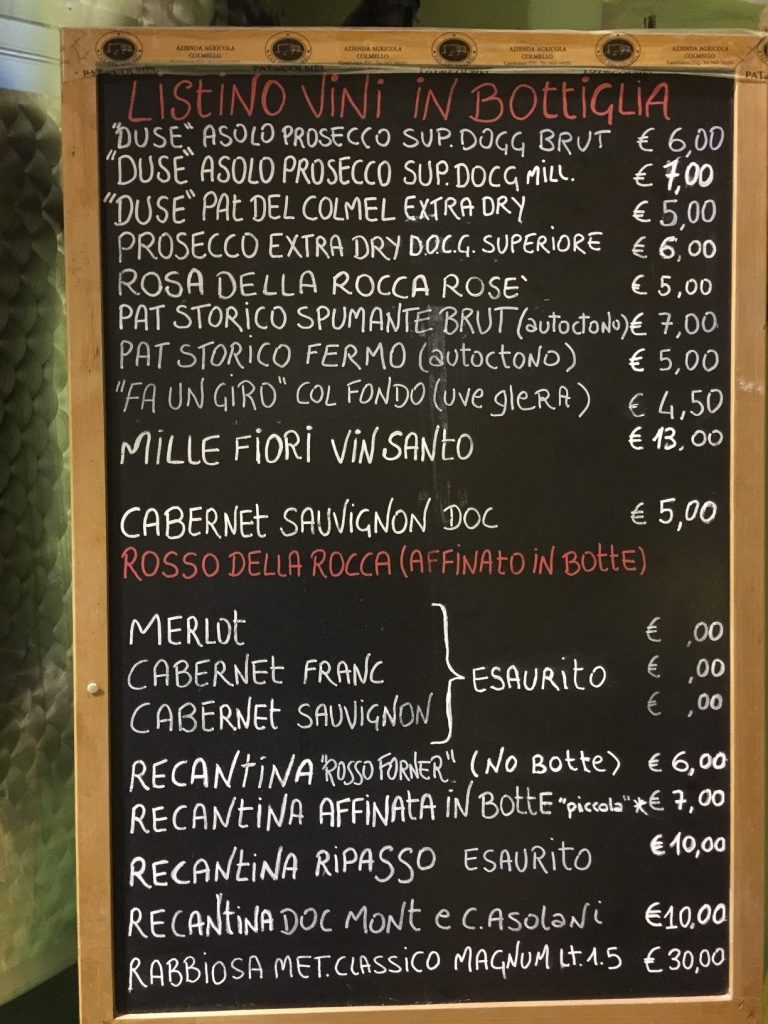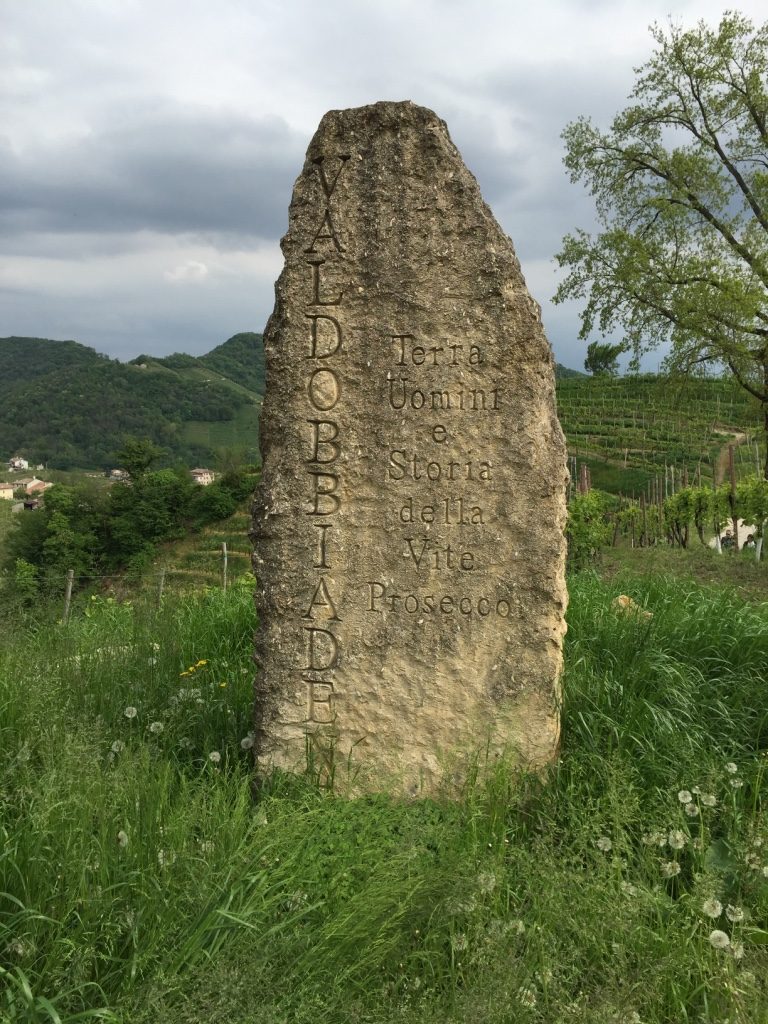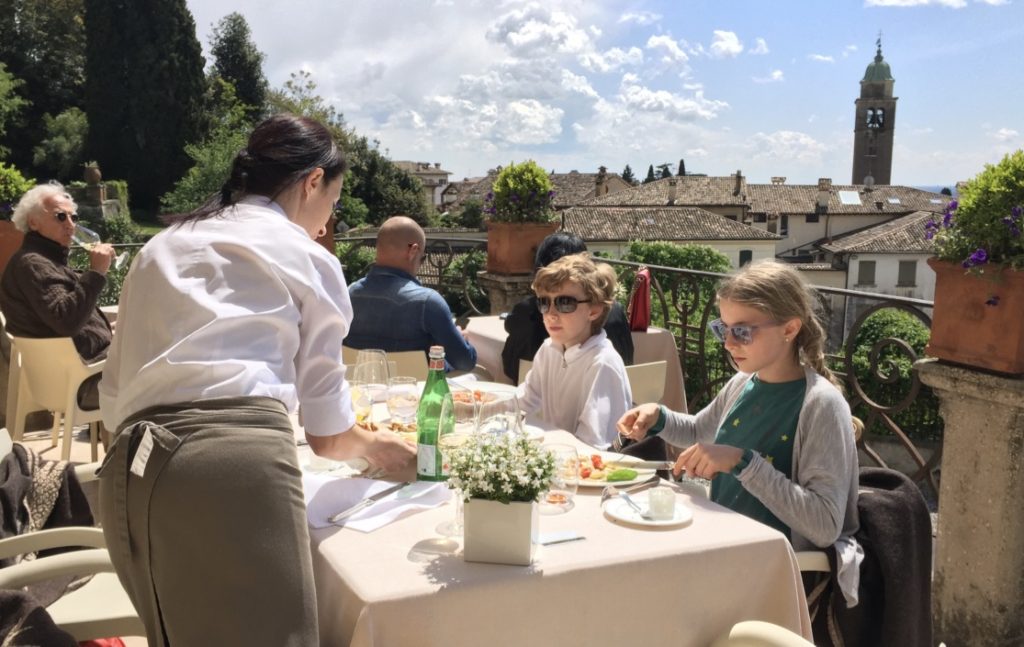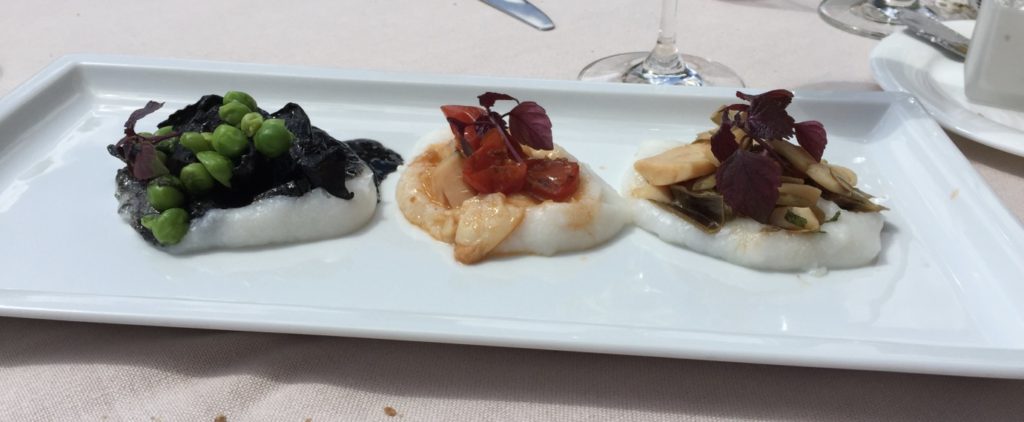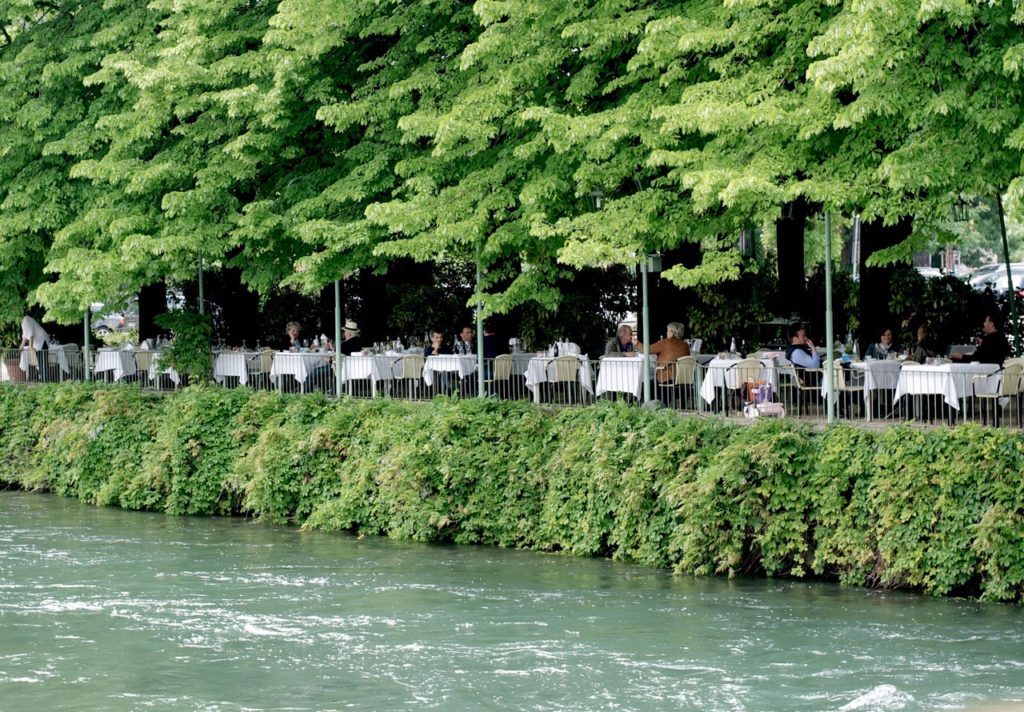A Toast to the Prosecco Hills of Conegliano and Valdobbiadene !
It makes our hearts sing to know that not only does the pizza of Naples have UNESCO World Heritage recognition and protection, but since last month so do the Prosecco Hills of Conegliano e Valdobbiadene !
Located in Veneto in northeastern Italy, this newly recognized World Heritage area includes the choicest portion of the Prosecco wine production area. The United Nations notes that “despite many changes and challenges posed by pests, wars, poverty, and the industrialization of viticulture, many of the attributes such as the vineyards, ciglioni and architectural elements demonstrate a good state of conservation. Ecological processes are critically important for the sustainability of the landscape and the vineyards. Threats are currently managed, although the state of conservation of some elements (particularly architectural and urban elements in the buffer zone) require improvement, and climate change has accentuated the incidence of landslides.”
We hope that you will travel to the area, using it as a base for culinary forays to radicchio farms….
And asparagus fairs.
And to some of the enchanting locations that are in and around the vineyard areas : favorites Asolo, Treviso, Bassano…
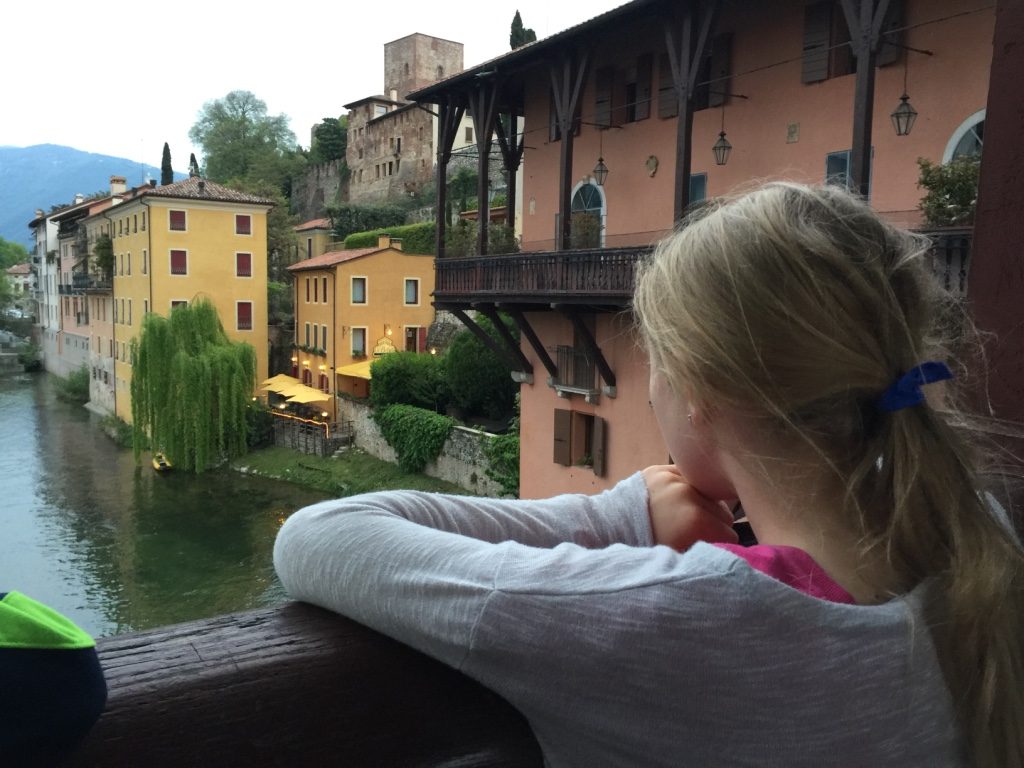 And because education is central to conservation, with us at your side please explore the UNESCO vineyard landscape so you can understand precisely why it is acknowledged as of Outstanding Universal Value.
And because education is central to conservation, with us at your side please explore the UNESCO vineyard landscape so you can understand precisely why it is acknowledged as of Outstanding Universal Value.
Prosecco, which now outsells champagne in the world market, is produced throughout Friuli and Veneto, but highest quality Prosecco comes from that very area recognized by UNESCO.
Because the hills here are so steep (called ‘hogback’), since the 17th century small plots of vines were moored onto narrow grassy terraces called ciglioni. These create a particular chequerboard landscape with rows of vines parallel and vertical to the slopes. Vineyard terraces alternate with forests, small villages and farmland in a rugged terrain shaped and adapted over centuries.
With annual sales growing astronomically, Prosecco producers in other areas are using high quantities of pesticides and herbicides. Italian press uses words like “exploitative overproduction that damages the land and local populations”.
But the wines we want you to taste are from this small, special protected area and a far cry from the industrial Prosecco that most of the world drinks. As in many other parts of Italy we have done the footwork for you, and discovered producers whose wines we dream of when we are not here.
In many of our favorite vineyards, family members themselves will go into the vineyards with you, or open bottles for you to try.
Some of vineyards you will visit are not heralded internationally, and some are; but all of the producers we like are committed to biodiversity, and to smaller yields to encourage responsible land stewardship. You will be made most welcome to sample, discuss and sample some more.
And we will introduce you to our wine docents who will spend as many hours with you as you wish in the vineyard, cellar and enoteca, furthering your education on Prosecco and delighting your palate.
It is nearly always less expensive to arrange to have Prosecco produced by smaller vineyards shipped from Italy than it is to purchase from a distributor, but throughout your Insiders’s travels, our winemaking friends will provide you with information on both options.
A good Prosecco is fresh and dry with a small bubble. Prosecco has three categories, from driest to sweetest and all use the glera grape: Brut (including Extra Brut and variously named zero-sugar styles), Extra Dry and Dry. And there is additionally a lightly sparkling, bottle-refermented Frizzante that can be labelled in various ways, but is commonly referred to as col fondo, meaning ‘with lees’. Since the lees are not removed, the wine is slightly cloudy with a tangy, citrusy and saline quality.
The best drier styles (“Brut)” originate from sites at higher elevations with greater day-night temperature variations, sometimes on more calcareous soils. In a radical break from tradition, Brut wines are also starting to appear from Cartizze, which was held in such high regard when production norms were first laid down in 1971 that it was granted its own DOC (Denomination of Controlled Origin) and has since been elevated to DOCG status (Denomination of Controlled and Guaranteed Origin, the highest designation of quality among Italian wines). Cartizze is the top of the quality pyramid, and though it caries 23 grams per liter of residual sugar, it has the intensity of fruit and enough appley acidity to make a real balance. There is a subtle, delicious steely minerality in the background which adds an extra layer of interest.
Brut and Cartizze !
They are wonderful with a garlicky crostino with fresh funghi porcini.
With an asparagus risotto, with plump tortelloni stuffed with greens and cheese. With white polenta prepared in three ways.
With fresh, milky cheeses that are not aged. With delicate lake and sea fish. With pork with morrels, or with mortadella. They are bone dry but full of fruit, apple and pear, and with a big full finish.
But what is most fun of all, we think, and this can be on any day of the year, from rainy winter to steamy summer, is to drink Prosecco here, or very close by, and in the good company of your family and friends.
We will be booking your tables for you. We know that you will be as happy there as are we.
Cin cin ! Alla salute !

